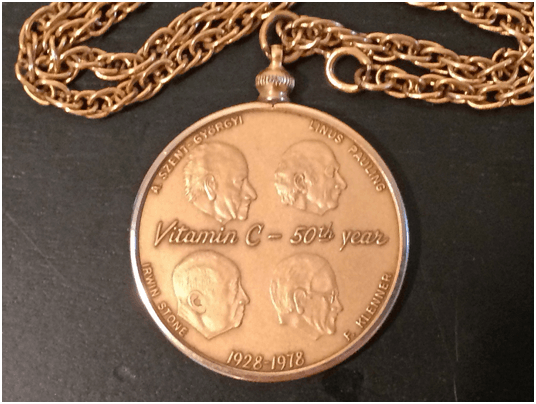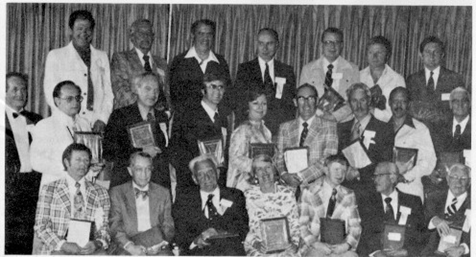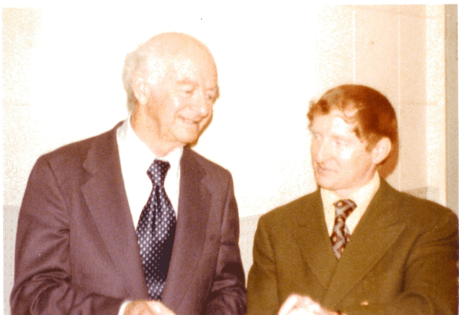We have discussed what I consider the first megavitamin, niacin, with Dr. Andrew Saul. I consider vitamin C to be the second megavitamin based on its suggested oral dosage in gram quantities. “Vitamin C” was of major importance before we even knew what vitamins were. It literally changed the World! Here’s a little history to give perspective.
One of the primary reasons the British Navy ruled the seas was because it could send its sailors farther and keep them healthy at sea longer than other navies. They had learned how to prevent the deadly scourge of sailors: scurvy. Scurvy, “the plague of the sea,” killed over an estimated 2 million sailors during the Age of Sail (1). Explorers such as Captain James Cook ventured further to unexplored lands in the Pacific from 1768 to 1780 after overcoming scurvy. Furthermore, historian Stephen R. Bown suggests that during the naval blockade of the French and Spanish fleets in the wars with Napoleon, the capability of the Royal Navy to remain on the seas constantly and avoid a Napoleonic invasion of England was due to the superior health of British sailors (1).
Nearly every nutrition student is familiar with surgeon Dr. James Lind’s controlled dietary experiments which determined that oranges and lemons are effective in preventing and curing scurvy. Lind published his 400-page Treatise on Scurvy in 1753 (2). Captain Cook relied on sauerkraut, concentrated orange and lemon juice, and fresh foods at each port to accomplish his long voyages to the Pacific.
The Magic FactorBut what was the magic antiscorbutic factor in these foods? In 1928, my late friend, Dr. Albert Szent-Györgyi (1893-1986), isolated the chemical form of this mysterious antiscorbutic factor called “vitamin C” and many years later, as the structure became clearer, he ended up calling it ascorbic acid. The naming process itself reflects Dr. Szent-Györgyi’s great humor as the name moved from “ignose” (because he was ignorant of its structure) to “godnose” to hexuronic acid (a sugar with six carbons) to ascorbic acid. In Nature in 1932, Dr. Szent-Györgyi published that ascorbic acid was indeed the antiscorbutic compound called “vitamin C.” This was confirmed by others with whom he had shared extracted ascorbic acid, including Dr. Charles King. In 1937, Dr. Szent-Györgyi received the Nobel Prize in Physiology or Medicine “for his discoveries in connection with the biological combustion process with special reference to vitamin C.”
Dr. Szent-Györgyi and I began corresponding in 1970 about electron transport and cancer. We both considered vitamin C as being most important for a stable and healthy state of the cell. Dr. Szent-Györgyi was a helpful reviewer of my work that led to my 1973 research paper, which to my knowledge, was the first paper to link free radicals to many cancers. The research paper was called “Cancer: New Directions.” (3)
In a March 19, 1973 letter to me, Dr. Szent-Györgyi wrote, “I have been working very hard and I have arrived at a new concept, but my ideas are not in disagreement with yours, they are complementary.” He presented his concept two years later. Indeed, our concepts had a lot in common, but no one else at the time saw the roles of electrons and free radicals in cancer initiation.
Electrons are the key in respiratory transport, which Dr. Szent-Györgyi had helped elucidate in the 1940s, and they are also key to the nutritional antioxidants that I was experimenting with. We both viewed health as a properly controlled flow of electrons within the cells. Dr. Szent-Györgyi’s earlier research with fumaric acid, succinic acid and citric acid laid the foundation for the elucidation of the Krebs Cycle, also known as the citric acid cycle, by British biochemist Dr. Hans Krebs. This cycle is a series of reactions which involves the conversion, in the presence of oxygen, of substances formed by the breakdown of the carbohydrates, fats and proteins in food to carbon dioxide, water and the energy-supplying compound adenine triphosphate (ATP). This is also known as cellular respiration. Dr. Szent-Györgyi is often credited with being the co-discoverer of this cycle, which is regarded as being one of the most fundamental mechanisms in human metabolism and of vital importance to the understanding of basic cellular metabolism and molecular biology. Dr. Szent-Györgyi had elucidated the first half of the cycle which Dr. Krebs completed, acknowledging Dr. Szent-Györgyi’s research.
Dr. Szent-Györgyi viewed vitamin C as being essential to the exchange of energy. I viewed vitamin C as being essential for recycling (recharging) other antioxidants to enable practical dietary amounts of them to control free radicals through all body systems. Dr. Szent-Györgyi viewed vitamin C’s energy as enabling cells to divide normally, the degree of electron saturation and desaturation determining whether the cell remains or divides abnormally and becomes cancerous. In a Triennial Conference for Nobel Laureates in Physiology or Medicine in June 1975 in Lindau, West Germany, Dr. Szent- Györgyi presented his new concept as the “Electronic Theory on the Origin of Cancer.” He referred to the chain of electron transfer reactions within the cell involving semiconducting protein molecules as “free radical reactions.” Thank you, Prof. (“Prof” was Dr. Szent- Györgyi’s nickname his friends called him by. When he wasn’t around, we called him “The Saint.”)

Perhaps I should also mention that Hungarian Dr. Szent-Györgyi also discovered the biochemical mechanism of muscle contraction. In World War I, Dr. Szent-Györgyi served as a medic. He joined the Austro-Hungarian Army, fought on the Russian and Italian fronts and was decorated for bravery. (4)
He became disgusted with war and shot himself in the right arm so he could return to his research, but was still decorated for bravery in battle. The injury to the bone was serious and plagued him the rest of his life. In 1939, Dr. Szent-Györgyi gave his Nobel prize money to the Finnish resistance. The Soviets had invaded Finland in November of 1939, sending close to a million soldiers and thousands of tanks.
When fascism swept into Hungary, Dr. Szent-Györgyi became a resistance fighter. He helped Jewish friends flee the reach of anti-Semites. Once World War II broke out, Hungary aligned itself with the Nazis, however Hungary’s prime minister wanted to conduct secret negotiations with the Allies. He sent Dr. Szent-Györgyi to carry out the negotiations. While he was researching the biochemical action of muscles, he used his studies to cloak his work for the underground. He traveled to neutral countries to deliver important political and scientific papers to the British legations there.
During World War II, he was extremely active in the Hungarian freedom fighters’ “underground resistance.” Hitler shouted out his name and ordered the Gestapo to hunt him down, capture and kill him. They almost captured him in the Swedish Legation in Budapest in 1941, but he escaped. That is, however, a story for another day. My point here, is that the bravery component of Dr. Szent-Györgyi’s personality was important to his science research as well.

Dr. B.F. Hart.
MaverickToday, Dr. Szent-Györgyi remains one of the most honored scientists of all time, yet, then he had to fight the existing establishment, who was not only skeptical, but also strongly resistant to his new ideas — each one as he elucidated them. He was called many disrespectful names before scientists understood the role of free radicals in biochemistry. The kindest name his detractors called him was “Maverick,” which he actually liked. He would remind us that discovery must be, by definition, at variance with existing knowledge. It has been humorous through the years to hear the dissenters explain away Dr. Szent-Györgyi’s brilliance with snide comment such as “OK, he’s been right before, but this time he is out of his depth.” My reply was “OK, he is the most awarded scientist of the 20th century and hasn’t been shown to be wrong yet.” One such controversy still irks me today. Dr. Szent-Gyorgyi believed that bioflavonoids are vital. Nutritionists at the time proclaimed that they were useless. Even today, most scientists are unconvinced of the vital role of bioflavonoids, but that is slowly changing as I have pointed out in several Vitamin Connection columns. Stay tuned!
Dr. Szent-Györgyi and I were both presenters at the 50th Anniversary of Vitamin C in Palm Springs. If you look at the photo below, Dr. Szent-Györgyi and I are in the front row, Dr. Fred Klenner (viral diseases) is in the middle row, and Drs. Abram Hoffer and Robert Cathcart are in the top row. Dr. Linus Pauling (pictured on page 50) is absent from the photo as he was giving his lecture on vitamin C and cancer from Dr. Ewan Cameron’s clinic in Scotland. Imagine that! These great vitamin C pioneers had to listen to my lecture on intracellular vitamin C forms and antioxidant recycling.
In the 1960s and 1970s, I was mostly interested in vitamin C for its antioxidant properties and its ability to reduce and recycle most any other antioxidant it encountered. At that time, my good friend, the late Dr. Linus Pauling (1901-1994), who made many discoveries and earned many medical and chemical awards including the Nobel Prize in Chemistry for 1954 and the Nobel Peace Prize for 1962, was interested in vitamin C mostly for its anti-viral and anti-cancer activity.
Dr. Pauling had many medical and biochemical accomplishments in addition to his fundamental chemical discoveries that revolutionized chemistry such as the nature of the chemical bond. He received about 40 medical awards. Dr. Pauling showed that the hemoglobin disease sickle-cell anemia was a molecular disease, the first known molecular disease. He discovered the three-dimensional nature of proteins, the hydrogen bond, the alpha-helix and pleated sheets. He predicted that enzymes worked as a “lock and key” mechanism.
Much has been said, pro and con, about his research with vitamin C and the common cold and cancer through the years. Professor Eggersdorfer will update us in Part 2 of this column. As I have discussed in earlier columns, Dr. Pauling and I collaborated on research projects as well as peace efforts. This, too, is a story for another day. Perhaps I may have the opportunity to share some of those efforts with you at a later date.

So much for the history, now let’s get to what’s new with vitamin C. Unfortunately, much of the medical community still views vitamin C with very narrow 18th century concepts. Their illogical thinking is often that because a lack of vitamin C causes scurvy, if there is no scurvy, there is no lack of vitamin C. As Dr. Szent-Györgyi used to point out, the trouble with that thinking was that scurvy is not a first symptom of lack but a final collapse, a premortal syndrome. “No scurvy” does not mean health. There is a very wide gap between scurvy and full health. We have learned a lot about vitamin C through the years. Vitamin C is pleiotropic indeed! Professor Eggersdorfer will begin his update on vitamin C in Part 2 of this series.WF
References1. Bown, Stephen R., “Scurvy: How a Surgeon, a Mariner, and a Gentleman Solved the Greatest Medical Mystery of the Age of Sail.” Thomas Dunne Books / St. Martin’s Press. (2003) ISBN 0-312-31392-6 http://www.jameslindlibrary.org/lind-j-1753/ 2. Passwater, R. A. Cancer: New Directions, American Laboratory 5(6)10-22(1973; International Laboratory (July/August 1973) 3. Wyatt, Joan Rice Saturday Evening Post (March 1976) and Executive Health XIII (9) (4 June 1977).
Published in WholeFoods Magazine November 2017










